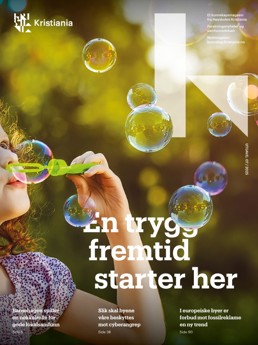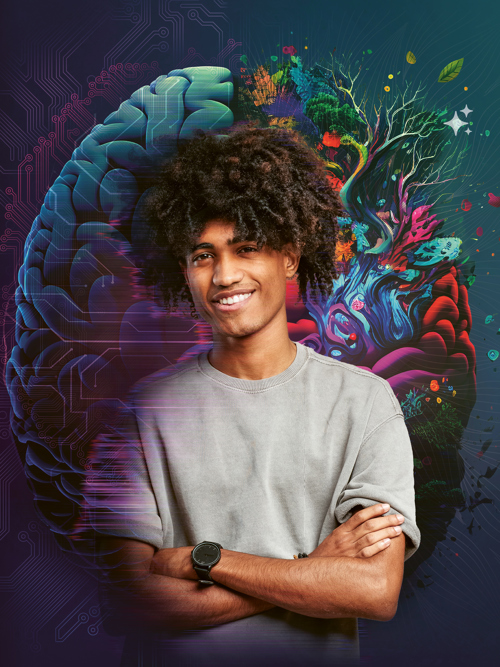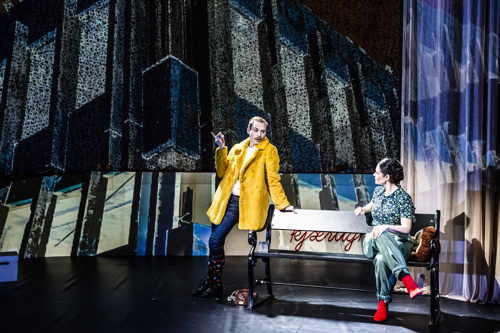Students and locals team up to build a safer, more inclusive city
SCIENCE NEWS FROM KRISTIANIA: Urban development
In the heart of Oslo lies Grønland — an area in the Old Oslo borough that embodies both the opportunities and the contrasts of modern urban life.
Known for its rich cultural diversity, Grønland also faces challenges such as social exclusion, overcrowding, social inequalities, and a lack of perceived safety.
Through the Media Art Innovation Lab (MAIL) — a new interdisciplinary joint course at Westerdals Institute of Film and Media at Kristiania — we will connect tomorrow’s film and media education more closely to the resources of the local community in Grønland.
The institute is located at Urtegata 9 in Grønland, and our teaching building has become part of a larger urban development that is changing the area’s dynamics and opening up new possibilities.
A laboratory for artistic exploration
The Media Art Innovation Lab is an interdisciplinary joint course that brings together students from four different bachelor’s programmes — Film and TV, Screenwriting, Sound Design, and Computer Arts (with specialisations in animation, visual effects, 3D graphics, and game design). The joint course serves as a laboratory for cross‑disciplinary collaboration and innovation.
Students are challenged to think in new ways and to experiment with creative solutions in film and media as responses to current societal issues. MAIL emphasises sustainability, diversity, and inclusion — values that students integrate into both their processes and their final products.
This makes the course a platform for artistic exploration and, at the same time, a venue for tangible solutions to challenges in the local community.

Les Kunnskap Kristianias temautgave:
Preservation of buildings and cultural heritage
Grønland’s cultural diversity and urban complexity create opportunities for mutual learning and collaboration between students and the local community.
One of the challenges raised by the Old Oslo borough and the local community around Grønland is the risk that new construction projects may lead to the loss of older buildings, cultural heritage, and local knowledge. Students can contribute by documenting the area and supporting the local community in preserving and clarifying its identity.
In addition, the borough seeks students’ help with a tree‑planting project and invites collaboration with Vahl Neighborhood School on media‑based after‑school activities.
Concrete projects — such as light installations in public spaces, digital artworks, and local media productions — make Grønland a learning arena for both students and the community
Projects may explore the district’s historical development and cultural diversity through innovative storytelling in film and sound, or develop artistic and technological solutions for safer and more inclusive urban spaces.
Creating value for students and the local community
When students from different programmes come together, they bring with them diverse perspectives and skills. Through collaboration, they not only learn from each other but also how to apply their strengths in new ways in other constellations and contexts.
These are tomorrow’s leaders and innovators, who wish to contribute positively to the local community. By strengthening ties with the local neighbourhood, students face real challenges that affect both their own daily lives and the society around them.
The collaboration between the borough and the Media Art Innovation Lab aims to create value for both the students and the local community. Through concrete projects — such as light installations in public spaces, digital artworks, and local media productions — Grønland will become a learning arena where Kristiania’s students both develop their professional competence and contribute to positive social development.
When, in June 2025, we hosted ELIA Academy — one of the most prestigious conferences in arts education — this project demonstrated how “life‑integrated learning” works in practice.
The collaboration between the school, the local community, and the borough is an example of how higher arts education can be connected to the local community to create sustainable and inclusive cities.
PRISMA paved the way for interdisciplinary innovation in teaching
In the Media Art Innovation Lab, students are divided into interdisciplinary groups called “villages,” inspired by Experts in Teams, a similar concept developed at NTNU. The course emphasizes innovation. External partners such as Amnesty International, NRK, and Oslo Open are invited to present societal challenges for students to work on. This spring, students have also been able to choose to collaborate with a variety of actors linked to the local community in Grønland, including organizations, institutions, and initiatives working in the area.
Text: Synne Tollerud Bull, Professor, School of Arts, Design and Media, Kristiania, and Leo Rygnestad, Special Consultant in the Urban Development Team, Oslo Municipality.
We love hearing from you!
Send your comments and questions regarding this article by e-mail to kunnskap@kristiania.no.
Siste nytt fra Kunnskap Kristiania
 Kunnskap KristianiaLes mer
Kunnskap KristianiaLes merDerfor kan den tradisjonelle julemusikken være ekstra fin å lytte til akkurat i år
Julemusikk og gamle tradisjoner kan bidra til en følelse av trygghet og kontinuitet i en urolig verden. Kunnskap KristianiaLes mer
Kunnskap KristianiaLes merHva er god utdanning?
I Kunnskap Kristianias nye temautgave har vi invitert forskere og undervisere til å reflektere rundt hvordan vi lærer, og hvordan god utdanning formes. Kunnskap KristianiaLes mer
Kunnskap KristianiaLes merHva kan en teaterregissør lære oss om politisk propaganda?
Dette gjør at du tror på en historie. Kunnskap KristianiaLes mer
Kunnskap KristianiaLes merVR-teknologi gjør at flere kan delta på konsert
Er hybride konsertopplevelser fremtida? 11. september kan du selv teste gratiskonsert enten ved scenen eller fra din egen stue.



